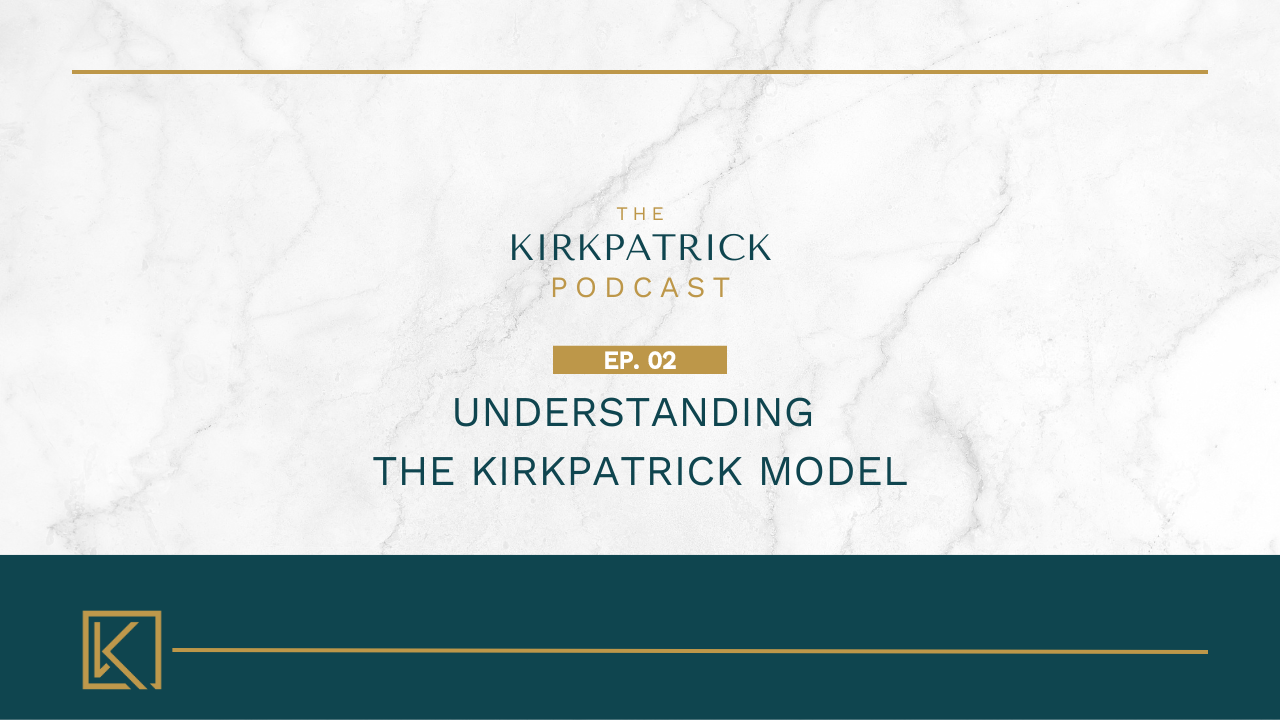Transforming Training Evaluation: Insights from the Kirkpatrick Model
In the latest episode of The Kirkpatrick Podcast, we took a deep dive into the Kirkpatrick Model to discover how it can revolutionize training evaluation in organizations.
The Misunderstood Kirkpatrick Model: Beyond Traditional Evaluations
One key takeaway from our chat was that a lot of folks out there misunderstand the Kirkpatrick Model. It turns out that many organizations, when they try to implement it, often overlook its key tenets. Traditional training evaluations typically focus on reaction (Level 1) and learning (Level 2), neglecting the crucial aspects of behavior (Level 3) and results (Level 4). This mix-up can make it seem like Level 4, which ties training to business results, is out of reach for most. We’re here to clear up that misconception!
Embracing a Comprehensive Approach to Evaluation
The modern Kirkpatrick Model is all about taking a holistic approach to evaluation. Forget those boring old smile sheets. We’re talking about instructor feedback, technology reviews, and chats with both managers and trainees. The goal is to collect the type of useful feedback that paints a full picture and captures the real impact of training.
The Evolution of the Kirkpatrick Model: Focusing on Performance and Results
The revamped model is about more than just training. It’s about diving into performance and results. This signals a step towards evaluations that make a real impact on the organization’s success. We’re not just measuring what people know; we’re measuring their skills, confidence, and attitude.
Implementing the Kirkpatrick Model: A Strategic Approach
Making the Kirkpatrick Model work requires candid conversations with stakeholders to understand exactly what they need. It’s also an opportunity for you to demonstrate the model’s value. Testing the waters with a pilot program is a great way to prove that it works and get everyone in the organization on board.
Level Three Evaluation: The Key to Behavioral Change
The all-important third level of the Kirkpatrick Model focuses on behavior, specifically assessing how trainees put what they’ve learned into action. Effective evaluation at this level means keeping a close eye on those behavior changes and making sure they match up with what you’re looking for. It’s not just about passing on knowledge; this approach emphasizes feedback and coaching to keep those performance improvements on the upswing.
Adapting to the Virtual Environment
We also chatted about the ups and downs of using the Kirkpatrick Model in remote work settings. The key is keeping the conversation flowing and building connections in the virtual space. It’s crucial for fostering growth and maintaining a culture that makes everyone feel valued and empowered.
A Paradigm Shift in Training Evaluation
The Kirkpatrick Model has undergone a major overhaul. Not only is it more comprehensive, but it’s also laser-focused on results when it comes to training evaluation. It’s time to ditch the old-school ways of thinking and instead focus on creating a culture that values learning, performance, and results.
Get on board with this fresh approach and watch the magic happen! Your organization’s training program will get a major boost, but more importantly, you’ll move closer to your business goals and see real growth and improvement among your staff.
Ready to dive into the Kirkpatrick Model? Check out these helpful tools, resources, and programs to take your training journey to the next level!
Listen to The Kirkpatrick Podcast
